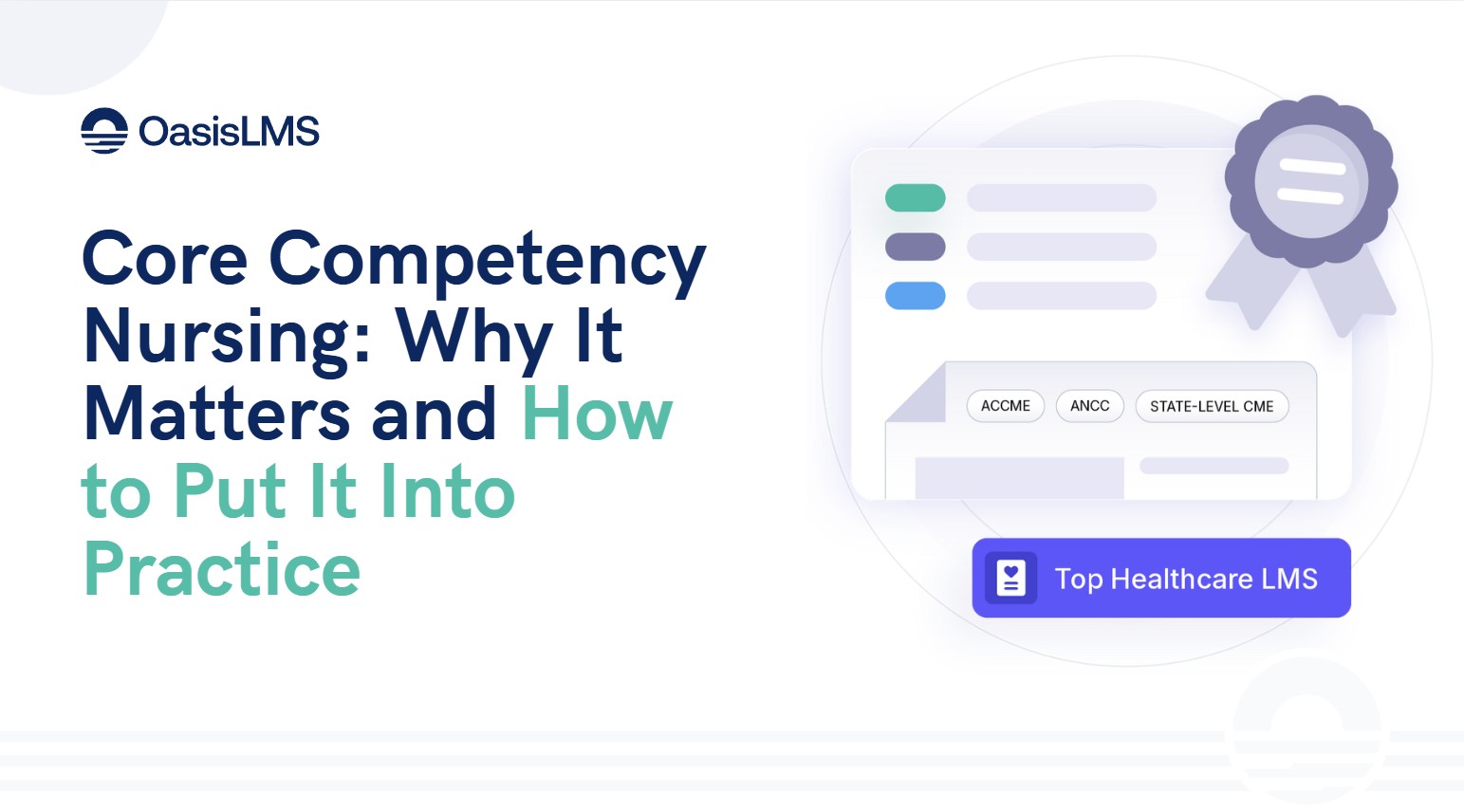
If you’ve ever worked alongside a great nurse, you know it’s about more than clinical skills. It’s the ability to think critically, adapt quickly, communicate clearly, and still bring compassion to every interaction. Those qualities, are what we call nursing core competencies.
Core competencies give nurses a roadmap for providing safe, effective, patient-centered care. They also give healthcare leaders and educators a framework to measure, improve, and support their teams. In this article, we’ll break down what nursing competencies are, how they’re measured, and what organizations can do to strengthen them in real-world practice.
In plain terms, competencies are the essential skills and behaviors every nurse needs to succeed. Whether they’re caring for patients, collaborating with colleagues, or using new technology.
They’re not a static checklist. As healthcare changes, so do the expectations of the nursing profession. Competencies have to evolve to keep pace with new patient needs, safety standards, and technology.
Some of the most common competency areas include:
Think of competencies as the backbone of professional nursing practice. Without them, care delivery becomes inconsistent and potentially unsafe.
For nurses, competencies create a sense of direction and accountability. For organizations, they help align training, professional development, and quality standards. And for patients, they translate into better, safer outcomes.
Done well, a competency framework leads to:
It’s not an exaggeration to say that competencies directly shape the quality of care at the bedside.
One of the most widely used frameworks comes from the Quality and Safety Education for Nurses (QSEN) project. It highlights six areas every nurse should master:
Many nursing schools, associations, and hospitals use QSENas a starting point when building their own competency models.
This is where it gets tricky. Unlike a written test, competencies are often about behaviors, judgment, and decision-making under pressure. Measuring them requires more than a single tool.
Healthcare organizations often use a mix of methods:
Blending these approaches tends to give the clearest picture of a nurse’s strengths and areas for growth.
Technology has opened new doors for competency development. Healthcare learning management systems, e-learning modules, and even VR simulations let nurses practice skills in a safe, repeatable environment.
For example:
Of course, technology is most powerful when paired with intentional practice: deliberate, focused training that builds confidence overtime.
Competency doesn’t end with clinical care. Nurses are also leaders, advocates, and change-makers. Yet research shows they’re still underrepresented when it comes to shaping health policy.
Developing competencies in leadership, communication, and advocacy helps nurses:
The more nurses are empowered to lead, the stronger our healthcare systems become.
If competencies are so valuable, why aren’t they everywhere? In many organizations, barriers include:
Overcoming these challenges means shifting theculture—framing competencies as part of professional growth, not justcompliance.
Healthcare leaders and educators can make real progress by:
When competency development is integrated into the fabric of an organization, nurses feel supported, patients feel safe, and outcomes improve.
At its core, nursing competency is about ensuring every patient gets the highest standard of care. It’s about building confidence in nurses, consistency across organizations, and trust with patients.
Competencies are not just checkboxes. They’re the lived expression of nursing excellence. And when supported with the right frameworks, tools, and culture, they have the power to transform both practice and policy.
Whether managing CME for physicians or supporting member growth, Oasis LMS helps deliver high-impact education efficiently and at scale.
